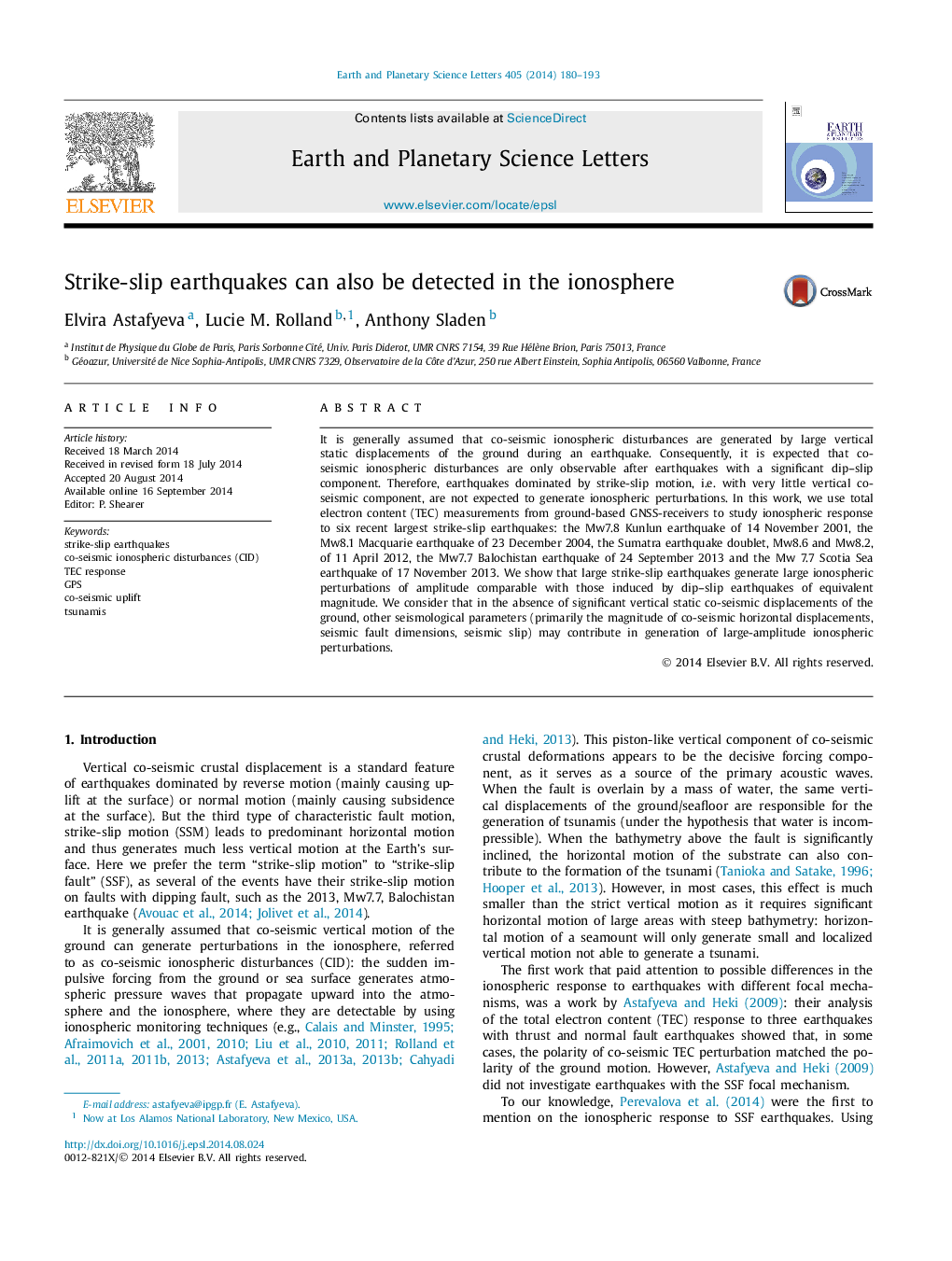| Article ID | Journal | Published Year | Pages | File Type |
|---|---|---|---|---|
| 6428932 | Earth and Planetary Science Letters | 2014 | 14 Pages |
â¢Large strike-slip earthquakes generate co-seismic ionospheric disturbances (CID).â¢Vertical static co-seismic displacements of the ground do not always play the decisive role in CID generation.â¢Other seismological parameters may contribute in generation of large-amplitude CID.
It is generally assumed that co-seismic ionospheric disturbances are generated by large vertical static displacements of the ground during an earthquake. Consequently, it is expected that co-seismic ionospheric disturbances are only observable after earthquakes with a significant dip-slip component. Therefore, earthquakes dominated by strike-slip motion, i.e. with very little vertical co-seismic component, are not expected to generate ionospheric perturbations. In this work, we use total electron content (TEC) measurements from ground-based GNSS-receivers to study ionospheric response to six recent largest strike-slip earthquakes: the Mw7.8 Kunlun earthquake of 14 November 2001, the Mw8.1 Macquarie earthquake of 23 December 2004, the Sumatra earthquake doublet, Mw8.6 and Mw8.2, of 11 April 2012, the Mw7.7 Balochistan earthquake of 24 September 2013 and the Mw 7.7 Scotia Sea earthquake of 17 November 2013. We show that large strike-slip earthquakes generate large ionospheric perturbations of amplitude comparable with those induced by dip-slip earthquakes of equivalent magnitude. We consider that in the absence of significant vertical static co-seismic displacements of the ground, other seismological parameters (primarily the magnitude of co-seismic horizontal displacements, seismic fault dimensions, seismic slip) may contribute in generation of large-amplitude ionospheric perturbations.
